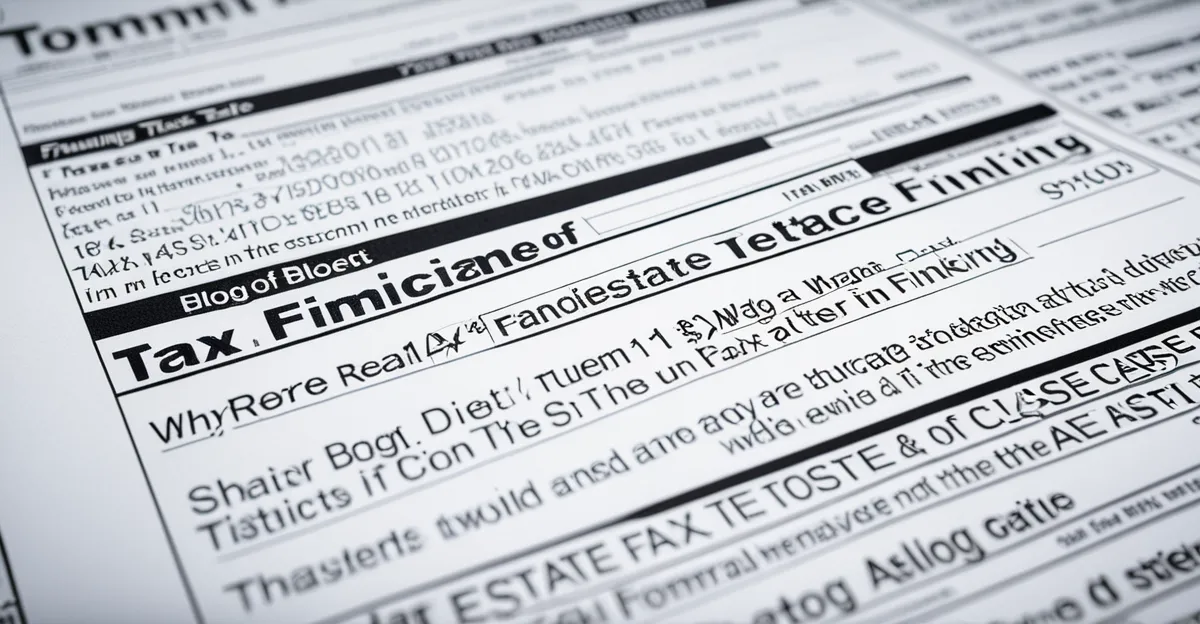Key UK Taxes Affecting Real Estate Finance
Understanding UK real estate tax types is essential for navigating property finance effectively. The main taxes impacting real estate transactions include Stamp Duty Land Tax (SDLT), Capital Gains Tax (CGT), income tax on property, and VAT on property. Each applies differently based on whether the transaction involves individuals or corporate entities.
Stamp Duty Land Tax is charged on property purchases and varies depending on property value and type. Corporate buyers and overseas investors often face additional surcharges or restrictions. Capital Gains Tax arises upon property disposal, with rates influenced by ownership status; individuals may benefit from main residence reliefs, while companies follow different CGT rules.
This might interest you : Are Property Investment Trends Shifting in the UK Real Estate Market?
Income tax on property affects landlords receiving rental income. Taxpayers can deduct allowable expenses such as mortgage interest and maintenance costs, though recent interest relief changes have tightened deductions for individuals.
VAT on property applies mainly to new commercial developments or when sellers opt to tax. Certain sales and rentals may be exempt or zero-rated, affecting developers and landlords differently.
This might interest you : How Will Emerging Technologies Transform the Future of the UK Real Estate Market?
Tax authorities regularly update legislation, so staying informed about changes in SDLT, CGT, income tax, and VAT is crucial for compliant and efficient real estate finance management.
Stamp Duty Land Tax (SDLT) and Its Impact on Transactions
Stamp Duty Land Tax (SDLT) is a key UK real estate tax type imposed on property purchases in the UK. SDLT rates depend on whether the property is residential or commercial and the purchase price. For residential properties, SDLT is calculated using a tiered system: different portions of the price pay different rates, starting from 0% for the initial threshold and increasing progressively. Commercial property purchases have a different SDLT structure, often with flat rates applied above a certain value.
Recent SDLT rate changes introduced higher thresholds, reducing the tax burden on lower-value properties, but foreign buyers and corporate entities often face supplementary surcharges, such as a 2% additional rate. These surcharges aim to balance housing market stability with investment flows.
Exemptions and reliefs help certain buyers, including first-time buyers who qualify for SDLT relief up to a set price point. Additionally, transactions like transfers between connected companies or certain property reorganizations may benefit from SDLT reliefs.
Because SDLT rules frequently update, especially concerning surcharges and relief eligibility, staying informed ensures accurate compliance and maximises tax efficiency in UK real estate finance.
Income Tax on Rental Income
Rental income tax in the UK applies to both individuals and companies earning income from letting properties. Individuals report rental income after deducting allowable deductions such as mortgage interest, repairs, maintenance, insurance, and management fees. However, recent changes have phased out the full mortgage interest relief for individuals, replacing it with a basic rate tax credit. This shift impacts landlords’ cash flow and overall tax liability.
For corporate landlords, rental income is taxed as part of company profits, allowing full deduction of expenses including mortgage interest without the restrictions faced by individuals. This creates different tax planning opportunities and challenges depending on ownership structure.
Understanding rental income tax intricacies is crucial when managing property investments. Expenses must be clearly documented and strictly linked to the rental activity. Allowable deductions reduce taxable income, but personal use or mixed-use properties require careful apportionment.
Changes to rental income tax rules reflect government efforts to balance taxing property investors while promoting affordability. Property investors in the UK benefit from thorough knowledge of these tax treatments, enabling them to optimise returns and remain compliant with HMRC guidelines concerning income tax on property.
Capital Gains Tax Considerations in Real Estate
Capital Gains Tax (CGT) applies when disposing of UK property, affecting both individuals and corporate entities. A property disposal triggers CGT liability, including sales, gifts, or transfers. Individuals benefit from an annual exempt amount, reducing taxable gains, whereas companies do not receive this relief but instead deal with corporation tax on gains.
CGT rates vary: individuals typically pay 18% or 28% on residential property gains depending on income level, while companies’ gains are taxed within corporation tax rates. Main Residence Relief can exempt gains on a primary home, but it excludes second homes or purely investment properties, impacting property investors in the UK significantly.
Recent CGT rules tightened reporting timelines and introduced mandatory returns within 60 days of residential property disposal. This affects cash flow and compliance for investors unfamiliar with prompt filings.
Understanding the nuances of Capital Gains Tax is essential for strategic tax planning. Recognising when CGT applies, calculating gains accurately, and utilising available reliefs can mitigate tax burdens. Property investors should review ownership structure and holding periods to optimise exposure to UK real estate tax types related to CGT. Staying updated with legislative changes ensures effective navigation of CGT obligations.
VAT Implications for Property Transactions
VAT on property significantly affects UK real estate tax types, particularly in commercial property dealings. VAT typically applies to new commercial property sales and leases but can be complex due to exemptions and special rules.
When does VAT apply? New builds and substantially renovated commercial properties are usually subject to VAT at the standard 20% rate. Sellers sometimes choose to “opt to tax” to recover input VAT, especially when subsequent supplies involve VATable activities. This option impacts both developers and landlords, influencing cash flow and pricing strategies.
What about exemptions? Some commercial property sales, such as older buildings or certain residential leases, are exempt from VAT. There are also zero-rated supplies, like the first sale of new residential homes, which allow for VAT recovery without charging VAT to buyers.
Landlords and developers must distinguish between VATable and exempt supplies to properly account for VAT. Failure to manage VAT on property correctly can lead to costly penalties or missed recovery opportunities.
In summary, mastering VAT on property demands understanding its application to different transaction types and opting for tax treatments that optimise financial outcomes in the UK commercial property market. Keeping current with VAT-related legislative updates is essential for effective VAT planning.
Key UK Taxes Affecting Real Estate Finance
Navigating UK real estate tax types requires understanding how Stamp Duty Land Tax (SDLT), Capital Gains Tax (CGT), income tax on property, and VAT on property interplay with various ownership structures. Both individuals and corporate entities face distinct tax obligations influencing investment decisions and financial planning.
Stamp Duty Land Tax applies at property purchase, with tiered SDLT rates for residential properties and different schemes for commercial real estate. Foreign investors and companies often encounter additional surcharges, impacting transaction costs significantly.
Capital Gains Tax is triggered by property disposals. For individuals, CGT includes an annual exemption and variable rates based on income and property type, while corporate entities deal with gains via corporation tax rules. Main Residence Relief offers individuals valuable exemption, but many investment properties remain fully taxable, necessitating strategic management.
Regarding income tax on property, landlords face tax on rental income after deducting allowable expenses. Recent changes reduce mortgage interest relief for individuals, whereas companies retain full deductions, creating a key distinction in tax planning.
VAT on property predominantly affects commercial transactions. VAT applies to new builds or renovated properties, with options to “opt to tax” influencing recovery of VAT input and compliance requirements.
Legislative updates from HMRC continue to reshape these tax categories, underscoring the need for up-to-date knowledge to optimize real estate finance in the UK.
Key UK Taxes Affecting Real Estate Finance
Navigating UK real estate tax types requires careful understanding of the interplay between Stamp Duty Land Tax (SDLT), Capital Gains Tax (CGT), income tax on property, and VAT on property. These taxes impact both individuals and corporate entities differently during property transactions, investment management, and disposals.
SDLT applies at property purchase, with tiered rates for residential properties and specific schemes for commercial real estate. Foreign investors and companies often face additional surcharges, raising transaction costs significantly.
Capital Gains Tax arises on property disposals, including sales and transfers. Individuals benefit from an annual exemption and variable rates based on income and property type, while companies are subjected to corporation tax on gains. Importantly, Main Residence Relief offers relief to individuals on their primary homes but excludes investment assets.
Regarding income tax on property, landlords declare rental income after deducting allowable expenses such as mortgage interest and maintenance. Recent reforms have curtailed mortgage interest relief for individuals, but companies retain full deductibility, influencing tax planning choices significantly.
Finally, VAT on property mainly concerns commercial developments, where VAT at 20% applies to new or renovated buildings. Opting to tax allows VAT recovery but complicates lease and sale structures. Keeping abreast of legislative changes ensures compliance and optimisation when managing tax liabilities across UK real estate tax types.











